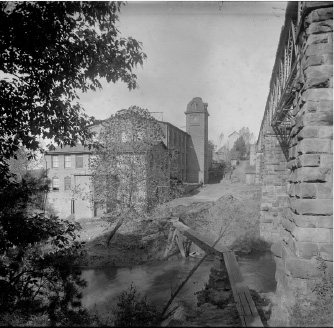Property History
Formed by the intersection of Moore’s Creek and the Rivanna River, this parcel of land previously stood as an epicenter of industry and trade. Located one mile from Charlottesville’s original downtown, the site was adjacent to Pireus, the port of Charlottesville, back when the town billed itself as the Athens of the South. Prior to the founding of the Woolen Mills in 1868, the site was first developed in 1795 with a water grist mill. Later, in 1840, William H. Meriweather built out what was known as “The Charlottesville Factory,” a collection of buildings housing wool, cotton, saw, and grist mills. In 1851, John Adams Marchant took ownership of the factory, producing clothing for enslaved persons and moving into cloth and uniforms during the Civil War.
In 1865, the Union Army captured Charlottesville and burned anything that could benefit the Confederacy - including the factory. Marchant’s son, Henry Marchant, had recently taken helm of the company and became responsible for the resurrection of the structure and its industry, starting modestly with carding (cleaning and untangling) wool and slowly building up business over the decades. In 1868, Marchant renamed the business, officially establishing “The Charlottesville Woolen Mills.” At the time, the company had a staff of 50 people and produced a variety of wool textiles, from fabrics for uniforms and work clothes to cashmeres. Despite weathering hard times, including dam breaks, fires and the economic “Panic of 1873,” The Woolen Mills became nationally known for their excellent production of fine military fabrics and uniforms, furnishing cloth for the majority of railroad workers and military schools.
As the company grew, so did the surrounding mill village and neighborhood as it was originally too far to walk from downtown. Dating back as far as 1847, housing was added over the decades in a variety of architectural styles, including Gothic Revival, Colonial Revival, Craftsman Bungalow and Cape Cods, many of which stand today. The mill added the town’s first telephone in 1878, a Gothic-style chapel and a schoolhouse to foster community.
The Charlottesville Woolen Mills continued operating into the 1960s, again providing uniform cloth during World War II. Eventually, the factory was closed in 1962. The buildings were more recently used as a storage facility. The majority of the surviving mill buildings standing on the site today were built in 1920-1930s.
